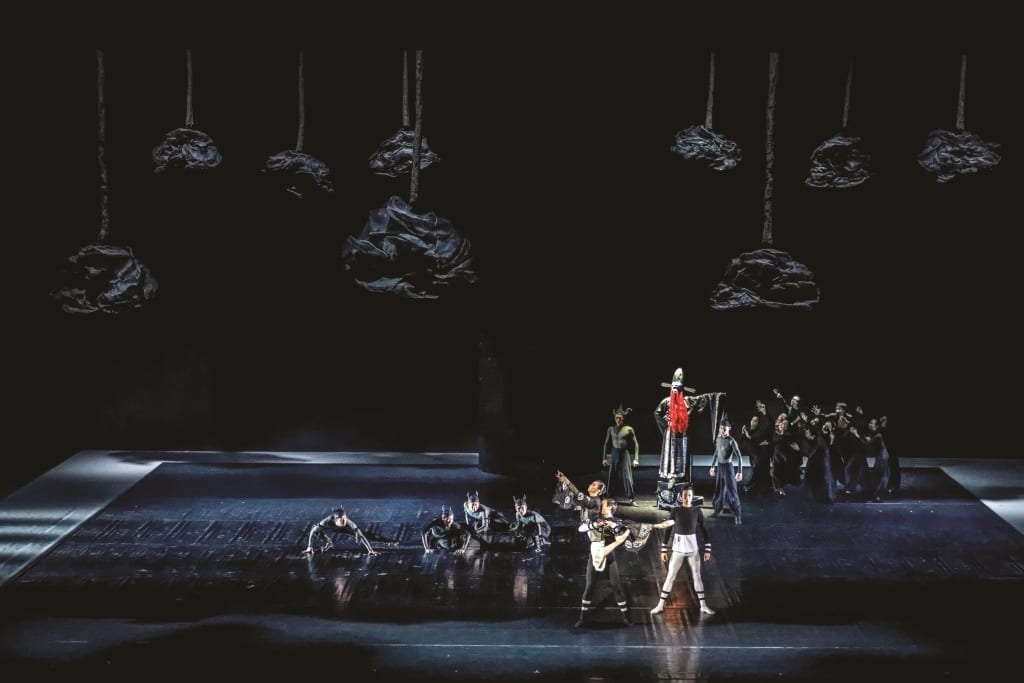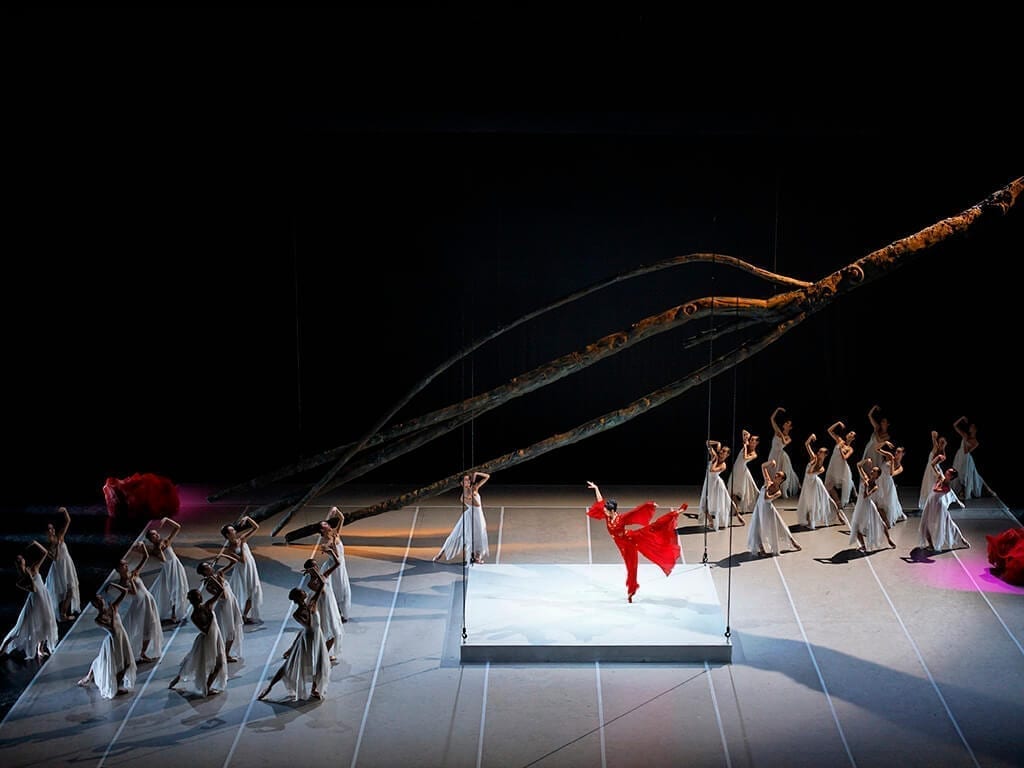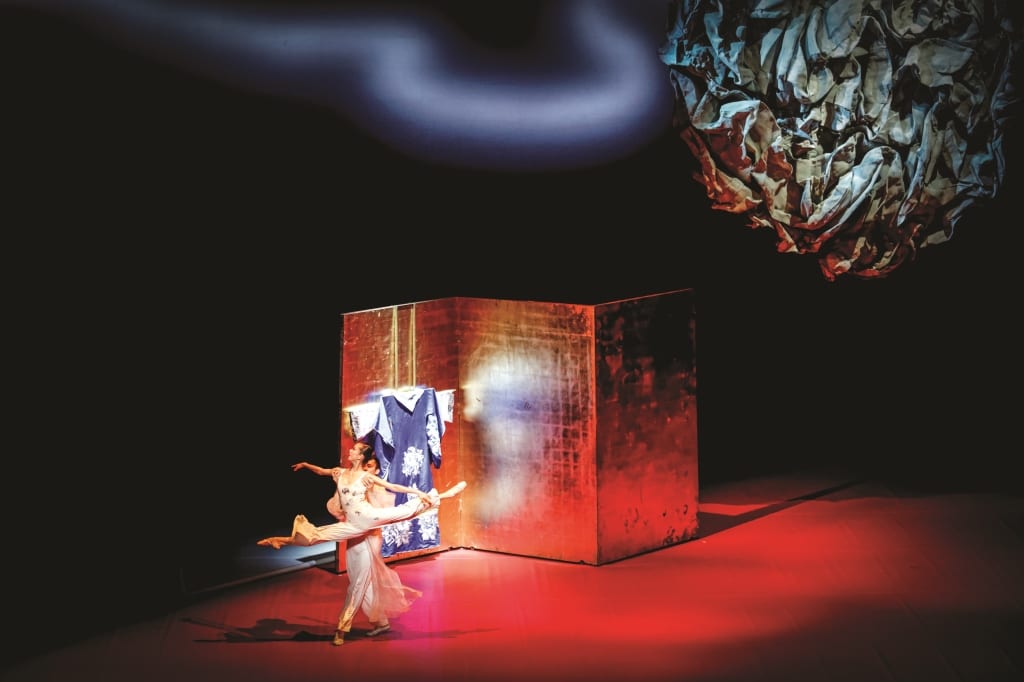First seen at the Edinburgh festival, the two-act adaptation of 16th-century Chinese love story The Peony Pavilion from the National Ballet of China is more than just a ballet, it’s a mix of classical and contemporary dance, theatre, and opera. Originally a play with 55 scenes then a 20-hour-long Kunqu opera, the director Li Liuyi managed with The Peony Pavilion to shorten it to a two-hour long show beautiful combining different art forms.
Du Liniang (Zhu Yan) dozes off in a garden and starts dreaming about finding the love of her life. The curtain comes up on perhaps the most beautiful moment of the show. The garden is filled with beautiful flowers, dressed in charming white costumes, dancing in complete unison, blooming in perfect synchronicity, following the gust of wind of a misty morning. The Peony Pavilion is off to a great start.
She then meets the handsome Liu Mengmei, who twirls around her without daring to touch her. Their love scene, which takes place in the 16th century, is very subtle. When their hands finally touch they shiver. He dares remove her left shoe, illustrating eroticism at it’s most divine form.
The show is not just about beauty of movement. Each dancer plays a character and each one has a strong facial expression. The dancer representing love, for instance, draped in vivid red, is sometimes joyful and sometimes invasive. Her character is very difficult to discern and paints a realistic picture of love. She dances solemnly with both Liu Mengmei and Du Liniang, reminding them of her eternal presence.
Then she wakes up, the dream dies, and everything fades away. She is lost, confused and most importantly desperate. She tries hard to fall asleep again to relive her dream. The scenes that follow blurs her dream and the reality. The Flower Goddess dramatically drops her blue uniform to reveal her white dress. She has just died of a broken heart.
Up she goes on a square platform in the middle of the stage. The two lovers reunite in hell as their love goes beyond death. But things have changed. The show ends with their wedding, a lugubrious ceremony making a stunning finale.
The décor is simple and beautiful. The fabrics, colors, and movement of the costumes are a delight to the eyes. The indisputable grace of Du Liniang makes her performance absolutely stunning. Chapeau bas!




